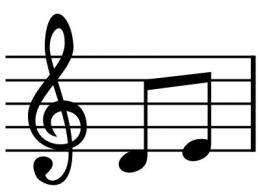December 18, 2012 report
Study shows brain processing similarities between music and movement

(Medical Xpress)—Researchers at Dartmouth College have devised an experiment that demonstrates how music and movement are processed by the brain in similar ways. They describe their experiment and discuss its possible implications in a paper they've had published in the Proceedings of the National Academy of Sciences.
Scientists have been at a loss to explain the deep emotional attachment that human beings have with music, despite extensive study of the relationship throughout history. They, like most everyone else however, have also been aware of the fact that people listening to music or watching something or someone that is clearly experiencing an emotion, can experience similar emotional reactions. Slow sad music for example, might elicit similar emotions to that of witnessing a cartoon character pining over a cherished possession.
To find out more about the relationship between the ways the brain processes emotions that come about from two very different sources, the team devised an experiment involving two computer animations. In the first, 50 volunteers were asked to use on-screen sliders to manipulate animated balls into showing different types of emotions. In the second, 50 different volunteers were asked to use the same types of sliders to manipulate musical notes to represent the same types of emotions as with the first group. After analyzing slider placement in both groups, the team found them to be nearly identical when being manipulated to bring about the same emotions. This, the researchers suggest, shows that the brain processes music and some types of motion using the same basic circuitry.
To further bolster their findings, the team took their experiment to the remote highlands of Cambodia where a tribe of people known as Kreung live. Because none of them had ever been exposed to western music, they could serve as a control group. In running the experiment, the researchers found very nearly identical results to those they'd found with the all American volunteers. The researchers say this shows that the connection between music and motion is hardwired in humans.
In discussing their results, the researchers suggest their work offers a possible explanation for the deep psychological and physiological connection people have with both music and motion. It's because, they say, the two use the same parts of the brain in very similar ways to process both.
More information: Music and movement share a dynamic structure that supports universal expressions of emotion, Published online before print December 17, 2012, doi: 10.1073/pnas.1209023110
Abstract
Music moves us. Its kinetic power is the foundation of human behaviors as diverse as dance, romance, lullabies, and the military march. Despite its significance, the music-movement relationship is poorly understood. We present an empirical method for testing whether music and movement share a common structure that affords equivalent and universal emotional expressions. Our method uses a computer program that can generate matching examples of music and movement from a single set of features: rate, jitter (regularity of rate), direction, step size, and dissonance/visual spikiness. We applied our method in two experiments, one in the United States and another in an isolated tribal village in Cambodia. These experiments revealed three things: (i) each emotion was represented by a unique combination of features, (ii) each combination expressed the same emotion in both music and movement, and (iii) this common structure between music and movement was evident within and across cultures.
© 2012 Medical Xpress
















